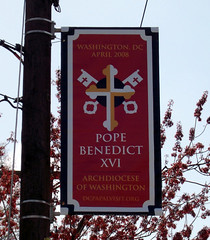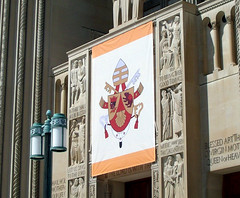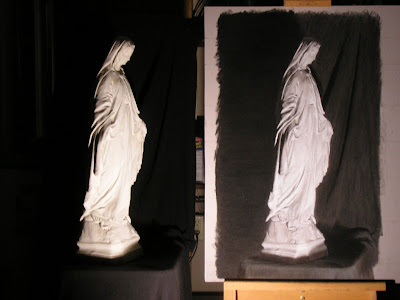So I've been worrying a little regarding my idea of inset gutters as I watched the ice melt from the roof of our current home and fill up our gutters. We definitely need an inset gutter in the previously mentioned problem areas, but I am changing my mind on having them everywhere else. There are few issues with having inset gutters everywhere:
- They are inset within the roof and within the enclosure of the home, which really makes me worry about having ice build up there (regardless of whether we have heat tape or other heating method)
- Since no contractor we talked to had done something like this before, this was going to take some planning, which translates into higher cost (likely higher than even standard gutters)
- Maintenance is still an issue, as leaves and debris are caught in the gutters and need removal to prevent clogs, and many of these gutters would be high up
The original reason for wanting inset gutters was to remove the gutter as an eyesore on the outside of the home, and inset gutters definitely accomplish this goal. But the issues cited above called for a different solution.
Since I am a voracious web surfer and reader, constantly looking for low-cost home solutions, I have indeed found a different solution. The solution has no worries regarding ice build up, they are low maintenance, well-designed, and low cost. They are called rainhandlers. They were invented by an engineer (of course, and these immediately put them in good stead with me) from MIT, who injured himself on a ladder trying to clean out his gutters. The concept immediately made intuitive sense to me. Instead of gathering all the water coming of the roof and sending to one spot (which has it's own potential problems for foundation moisture and pooling), the rainhandlers take the stream of water and convert it back to "rain". Rainhandlers are spaced, curved fins that take the stream of water and spread it in droplets over a 3 ft. area of ground. (Click below to enlarge) Here's the set-up we would need for our home design:
Here's the set-up we would need for our home design:
 In our case the "fascia board" is the entire outer wall of the home (we have no overhangs or eaves). We would need the "drip edge extender" to ensure the stream of water hit the fins of the rainhandlers. For any engineers out there, the fins are curved with an optimal design for spreading the stream of water, and the fins have to be mounted at a minimum distance below the roofline to ensure the water stream develops enough kinetic energy for the fins to create the 3 ft. spread of droplets.
In our case the "fascia board" is the entire outer wall of the home (we have no overhangs or eaves). We would need the "drip edge extender" to ensure the stream of water hit the fins of the rainhandlers. For any engineers out there, the fins are curved with an optimal design for spreading the stream of water, and the fins have to be mounted at a minimum distance below the roofline to ensure the water stream develops enough kinetic energy for the fins to create the 3 ft. spread of droplets.
The great thing is that from the street you really can't see these at all since you would be looking at them "on-edge". And the cost is roughly half of what you would pay for standard gutters (which means it's even more cost efficient compared to inset gutters). Maintenance-wise, leaves and debris rarely get caught in the rainhandlers, but if they do you just spray them off with a hose from the ground. Check out the website for a well-done video showing installation, as well as pictures of homes that have these installed. Call me a nerd, but I think these are cool :-)
Since I am a voracious web surfer and reader, constantly looking for low-cost home solutions, I have indeed found a different solution. The solution has no worries regarding ice build up, they are low maintenance, well-designed, and low cost. They are called rainhandlers. They were invented by an engineer (of course, and these immediately put them in good stead with me) from MIT, who injured himself on a ladder trying to clean out his gutters. The concept immediately made intuitive sense to me. Instead of gathering all the water coming of the roof and sending to one spot (which has it's own potential problems for foundation moisture and pooling), the rainhandlers take the stream of water and convert it back to "rain". Rainhandlers are spaced, curved fins that take the stream of water and spread it in droplets over a 3 ft. area of ground. (Click below to enlarge)
 Here's the set-up we would need for our home design:
Here's the set-up we would need for our home design: In our case the "fascia board" is the entire outer wall of the home (we have no overhangs or eaves). We would need the "drip edge extender" to ensure the stream of water hit the fins of the rainhandlers. For any engineers out there, the fins are curved with an optimal design for spreading the stream of water, and the fins have to be mounted at a minimum distance below the roofline to ensure the water stream develops enough kinetic energy for the fins to create the 3 ft. spread of droplets.
In our case the "fascia board" is the entire outer wall of the home (we have no overhangs or eaves). We would need the "drip edge extender" to ensure the stream of water hit the fins of the rainhandlers. For any engineers out there, the fins are curved with an optimal design for spreading the stream of water, and the fins have to be mounted at a minimum distance below the roofline to ensure the water stream develops enough kinetic energy for the fins to create the 3 ft. spread of droplets.The great thing is that from the street you really can't see these at all since you would be looking at them "on-edge". And the cost is roughly half of what you would pay for standard gutters (which means it's even more cost efficient compared to inset gutters). Maintenance-wise, leaves and debris rarely get caught in the rainhandlers, but if they do you just spray them off with a hose from the ground. Check out the website for a well-done video showing installation, as well as pictures of homes that have these installed. Call me a nerd, but I think these are cool :-)












